Abstract
The beta-adrenoceptor blocking activities of pindolol and propranolol have been investigated in healthy male volunteers. Pindolol was about forty times more potent than propranolol in reducing isoprenaline-induced tachycardia. Pindolol (5 mg) and propranolol (u99 mg) were approximately equiactive in reducing exercise-induced tachycardia, 2 h after oral administration. The duration of action of pindolol is significantly longer than that of propranolol; 24 h after pindolol (kmg), 36+/-5% of the masimum effect were still present, and after propranolol (100 mg) 16+/-4% remained. Despite the long duration of action of pindolol, there was no evidence for cumulation during oral administration of 5 mg t.d.s. for 5 days.
Full text
PDF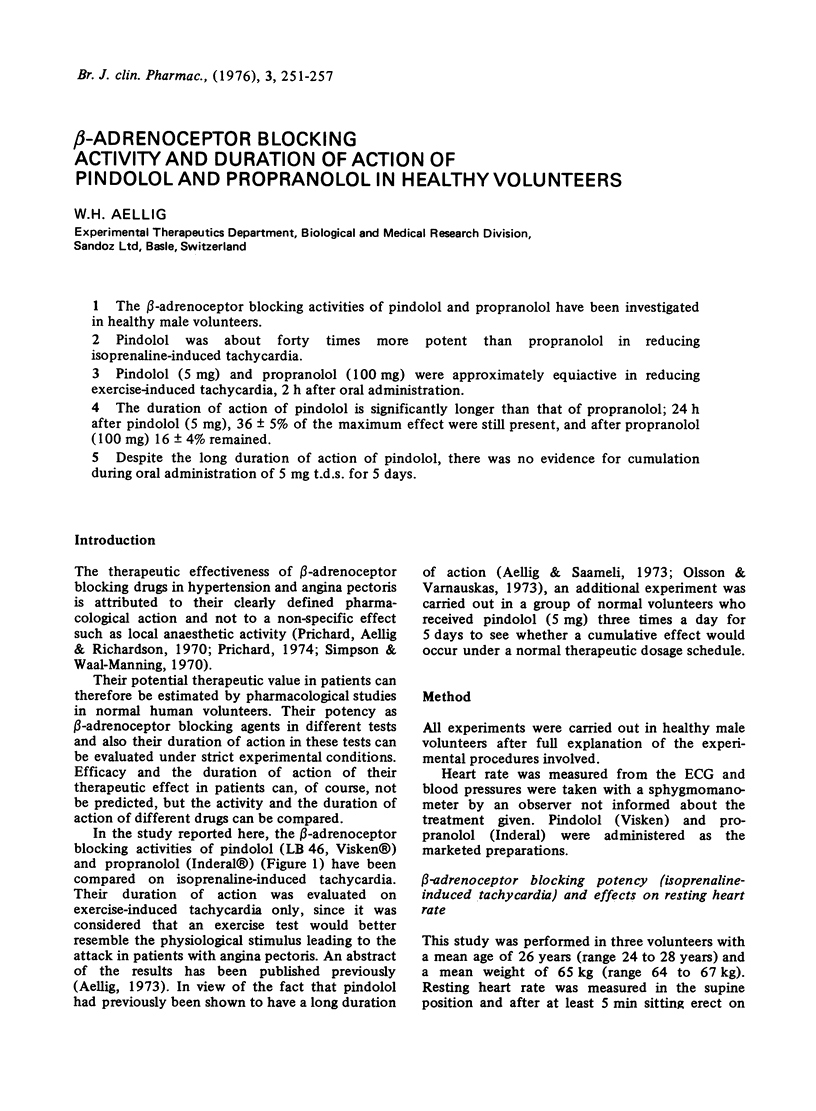
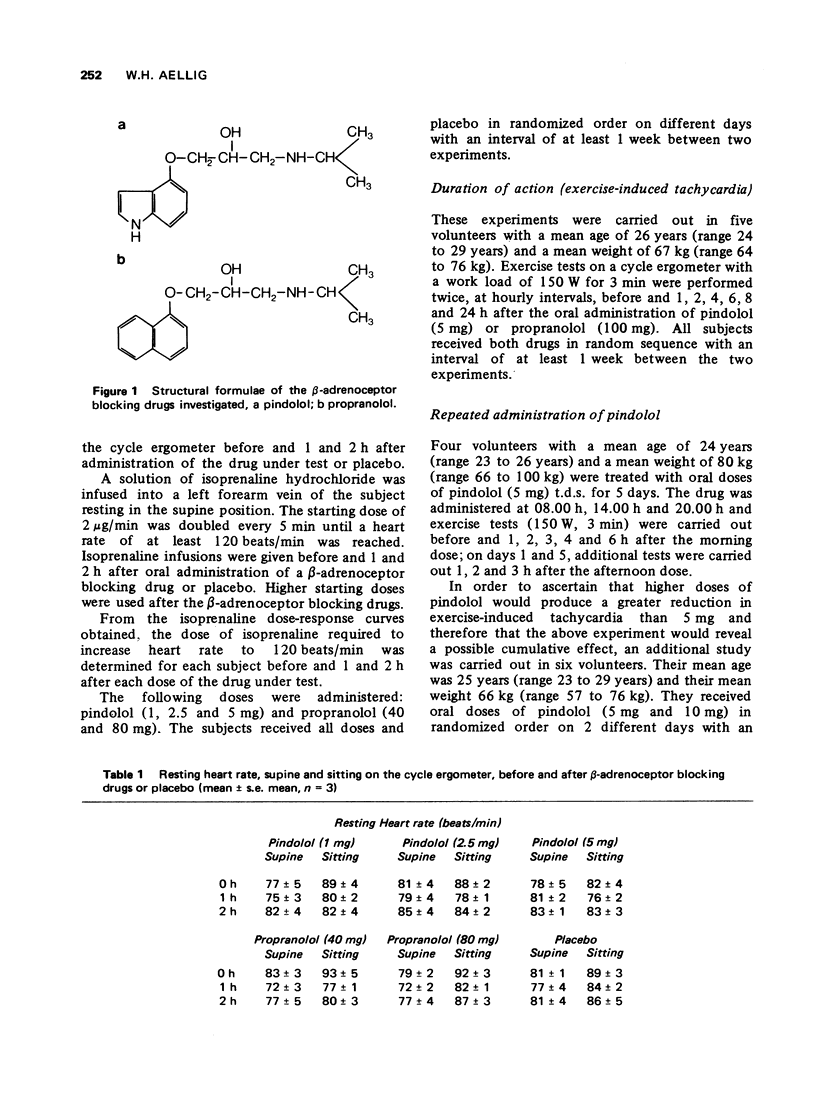
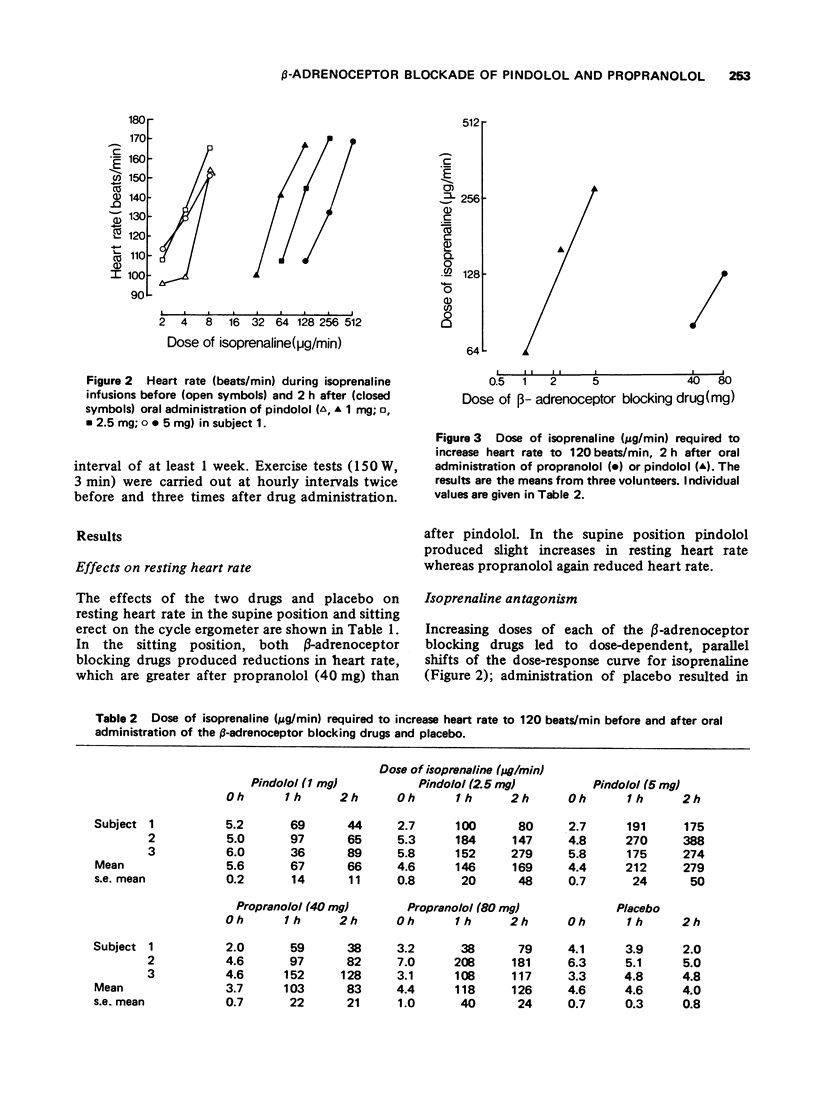
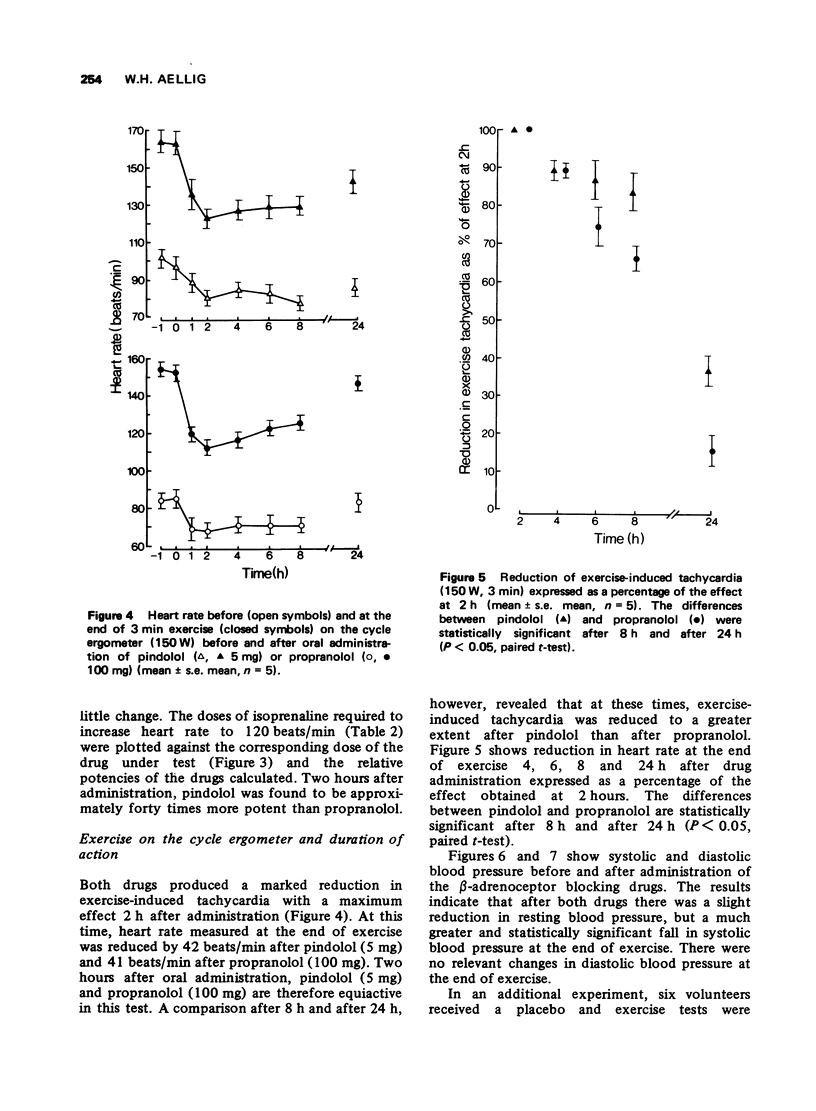
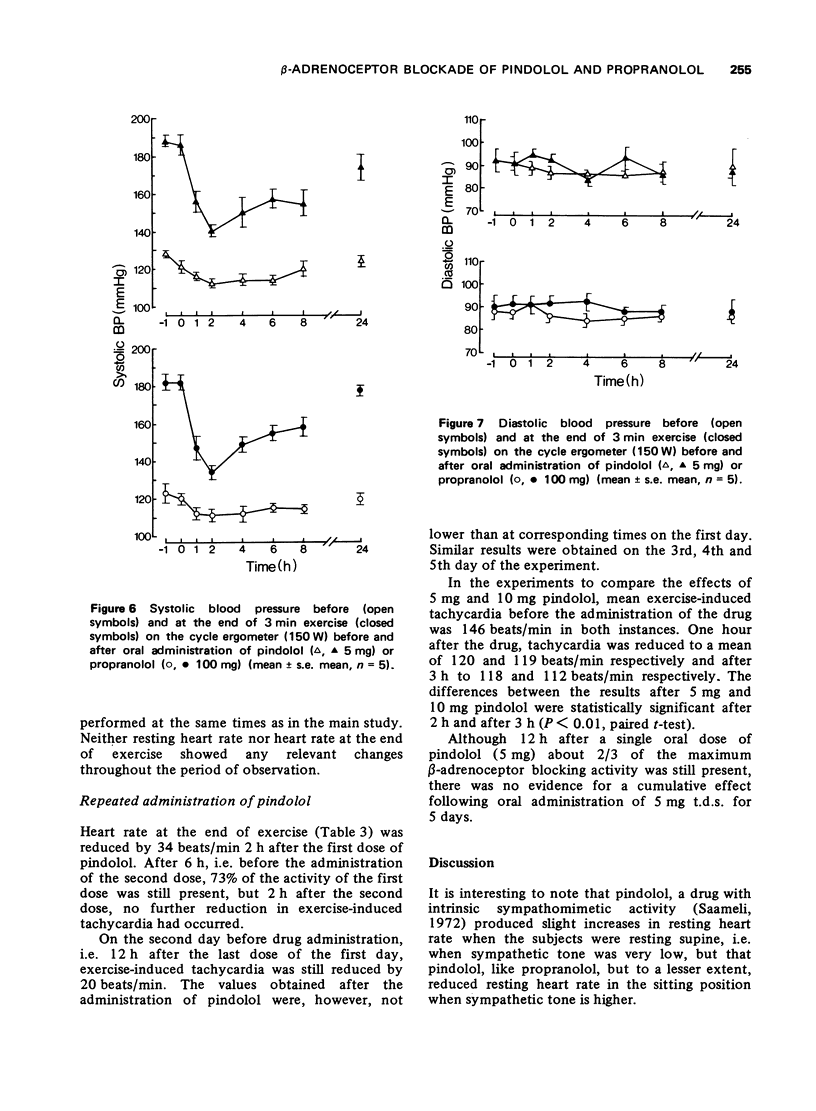

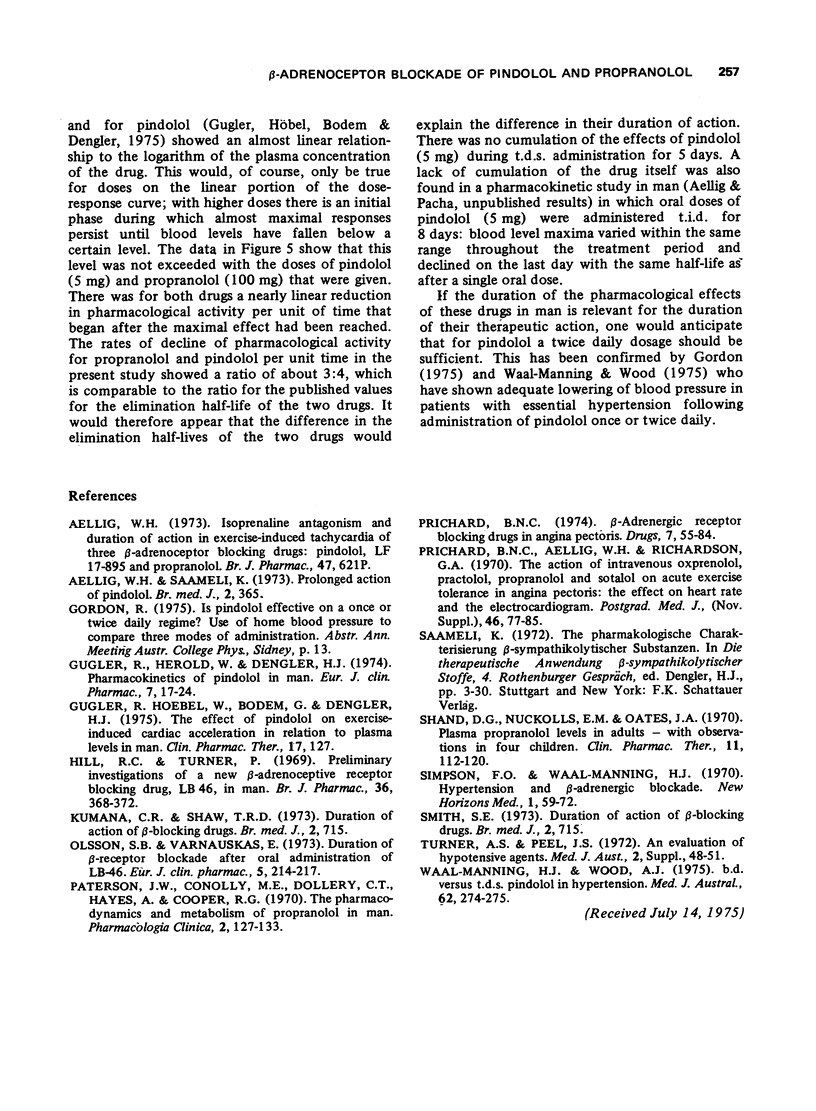
Selected References
These references are in PubMed. This may not be the complete list of references from this article.
- Aellig W. H. Isoprenaline antagonism and duration of action in exercise induced tachycardia of three -adrenoceptor blocking drugs: pindolol, LF 17-895 and propranolol. Br J Pharmacol. 1973 Mar;47(3):621P–622P. [PMC free article] [PubMed] [Google Scholar]
- Aellig W. H., Saameli K. Prolonged action of pindolol. Br Med J. 1973 May 12;2(5862):365–365. doi: 10.1136/bmj.2.5862.365-b. [DOI] [PMC free article] [PubMed] [Google Scholar]
- Gugler R., Herold W., Dengler H. J. Pharmacokinetics of pindolol in man. Eur J Clin Pharmacol. 1974;7(1):17–24. doi: 10.1007/BF00614385. [DOI] [PubMed] [Google Scholar]
- Gugler R., Höbel W., Bodem G., Dengler H. J. The effect of pindolol on exercise-induced cardiac acceleration in relation to plasma levels in man. Clin Pharmacol Ther. 1975 Feb;17(2):127–133. doi: 10.1002/cpt1975172127. [DOI] [PubMed] [Google Scholar]
- Hill R. C., Turner P. Preliminary investigations of a new beta-adrenoceptive receptor blocking drug, LB46, in man. Br J Pharmacol. 1969 Jun;36(2):368–372. doi: 10.1111/j.1476-5381.1969.tb09511.x. [DOI] [PMC free article] [PubMed] [Google Scholar]
- Prichard B. N., Aellig W. H., Richardson G. A. The action of intravenous oxprenolol, practolol, propranolol and sotalol on acute exercise tolerance in angina pectoris: the effect on heart rate and the electrocardiogram. Postgrad Med J. 1970 Nov;(Suppl):77–85. [PubMed] [Google Scholar]
- Prichard B. N. Beta-adrenergic receptor blocking drugs in angina pectoris. Drugs. 1974;7(1):55–84. doi: 10.2165/00003495-197407010-00005. [DOI] [PubMed] [Google Scholar]
- Shand D. G., Nuckolls E. M., Oates J. A. Plasma propranolol levels in adults with observations in four children. Clin Pharmacol Ther. 1970 Jan-Feb;11(1):112–120. doi: 10.1002/cpt1970111112. [DOI] [PubMed] [Google Scholar]
- Waal-Manning H. J., Wood A. J. Pindolol in hypertension: twice-daily versus thrice-daily dosage. Med J Aust. 1975 Aug 16;2(7):274–275. [PubMed] [Google Scholar]


